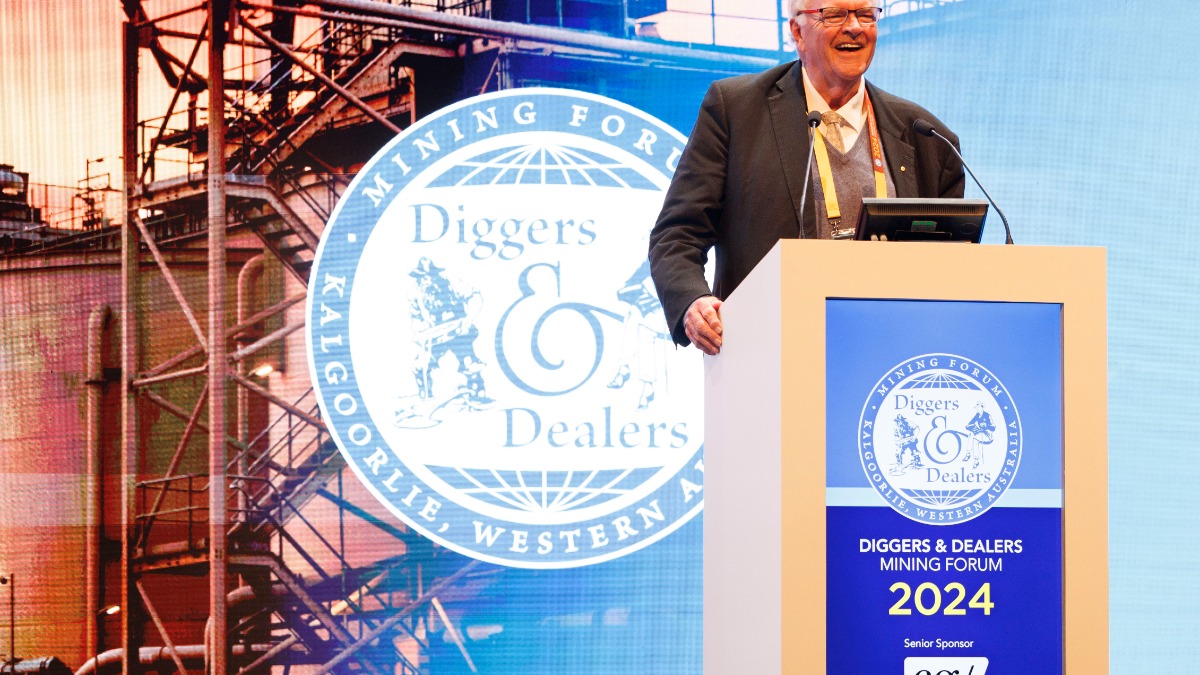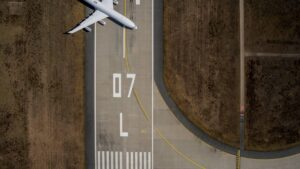Diggers and Dealers: Should the Government foot the bill for rare earths losses? Kim Beazley says yes

Kim Beazley. Pic: Diggers
- Kim Beazley says Australian taxpayers should subsidise rare earths mining and processing to break China’s hold on the sector, comparing it to a defence asset for us and our allies
- Lynas boss Amanda Lacaze says Australia is playing a 30 year catch-up in rare earths race
- High grade Mt Weld mine reserve now supports 20-plus year mine life
Former Federal Opposition Leader, US ambassador and WA Governor Kim Beazley has spectacularly called on the Federal Government to subsidise the Australian rare earths industry in a bid to match up to China.
In a call to supercharge the pace of development in the rare earths industry, the pollie and Diggers keynote speaker compared the sector to a naval weapon in Australia’s defence arsenal.
“How do you make money off an aircraft carrier? An aircraft carrier costs you $13 billion. I would think what we need to do in relation to rare earths might be $2 or $3bn,” he told media after his talk at the Kalgoorlie gabfest.
“Do I think ensuring that the rare earths [will be sustainably produced] or buy another frigate, I’ll go for the rare earths.
“This country is rare earth heaven … but the important point on all of that is we’re only 20% exploring it, we have probably got this all coming out of our ears.
“So I think the taxpayers would be well as pleased to if we did things that meant that this country survived.”
Rare earth prices are currently in a rut, with the most quoted price the Shanghai Metals Market NdPr oxide rate at US$52/kg. At their peak in early 2022, SMM NdPr prices hit US$175/kg.
But Beazley says we should be comfortable with subsidising lossmaking producers to prevent China, which controls entire light and heavy rare earths supply chains stretching to metallisation, magnet production and end products in defence, consumer electronics, electric vehicles and wind turbines, killing competitors by suppressing prices.
It is a claim that has been levelled to some extent by Iluka Resources (ASX:ILU) managing director Tom O’Leary, whose company has Canberra’s support via a $1.25bn loan for its ~$1.8bn Eneabba refinery near Geraldton.
“The Chinese do mine to missile production, and they will take their profit at any point along that road, and if destroying the rare earth industry in another country is what has to be done, they’ll do it,” Beazley said.
“So I say, fine, guess what? We’re going to do what you do. We are going to acquire this stuff.
“If we’re going to be able to ensure that our allies survive, we’re going to (have to) be very smart about it the good news is we may disagree over it, we may have worries about what taxpayers think and all the rest of it, but one thing we absolutely do know is we can do it, and we can do it probably for less than the price of a frigate.”
Riding the storm
$5.5bn Lynas, Australia’s only current rare earths operator, recently commissioned an $800 million cracking and leaching plant in Kalgoorlie-Boulder as part of a plan to expand capacity to up to 12,000tpa of NdPr oxide across its Mt Weld mine near Laverton, Kalgoorlie factory and Malaysian refinery.
CEO Amanda Lacaze, who spoke after Beazley on the morning of the first day of Diggers, stopped short of supporting his call to nationalise the rare earths industry.
But she said Australia was starting a race with a 30 year handicap, and that governments needed to invest in infrastructure to improve the cost competitiveness of our potential producers.
“The politicians and I often have this discussion – and I know that we were the beneficiary of support from the Japanese Government as well as remembering that was a $250 million loan it wasn’t like billions of dollars – and I think that patient capital, in mining and also in an area where you’re doing something for the first time is is really important,” she said.
“I think that if we truly want an industry, we do have to recognise that we’re playing a 30-year catch up game. The Chinese have worked on developing this industry and their expertise over 30 years.
“And so we can’t just sort of think without really focused effort that we will be able to catch up.
“Some of that’s about funding, but some of it is about the fact that we are fundamentally a high-cost environment in Australia and we need to be looking at improving the sorts of infrastructure that will allow us to be competitive.
“It’s one thing to say customers should pay more. But ultimately that means that if we say they should pay more then ultimately the consumer pays more and guess what? We’ve got a lot of a lot of rhetoric that says consumers should nott pay more.”
She said softness in the Chinese economy and stockpiles built last year through surprisingly large rare earth production quotas in the Middle Kingdom were the main factors that had kept prices depressed. She is cautiously optimistic that will unwind in the next 12 months, bearing in mind the economic woes in China continue to hurt the commodities.
Growth plans
The Kalgoorlie plant will operate below capacity until the market turns around, but growth plans continue to unfold at the legendary Mt Weld mine.
A resource and reserve update today bolstered resources by 92% to 106.6Mt at 4.12% total rare earth oxide, with ore reserves up 63% to 32Mt at 6.44% TREO.
The high grade orebody now supports over 20 years at the 12,000tpa rate or 35 years at 7200tpa.
That upgrade comes after LYC ended talks over a merger with America’s MP Materials, the only other significant rare earths producer outside China.
Lacaze is keeping a watching brief on juniors including companies operating in Brazil’s emerging ionic clay rare earths sector, a number of which have reported large but lower grade resource bases in recent months (the deposits are shallow and different in style to Lynas’ carbonatite hosted intrusion.)
But she indicated its internal growth options were attractive in the current market.
“We observe them all but as I said, we know the end of the cracking reed, which is that Mt Weld wins once again,” Lacaze said.
“The Mt Weld orebody is truly remarkable because it is heavy, it is lights, it is high grade. It is this magnetic intrusion, I call that it’s like a cookie jar. It is easy for us to be able to manage this deposit at this stage.
“And the first question that the team always asks is would we be better and investing in bad or would we be better to continue to invest in Mt Weld, the answer is always we’re better off continuing to invest in Mt Weld.”
Hit by lower prices that have caused it to stockpile some production, Lynas was down 3.27% yesterday and 15% since last year’s Diggers, as investors rotate out of critical minerals.
But Lacaze says long-term investors will benefit when the cycle turns. Her register includes two of Australia’s most influential institutional investors in Gina Rinehart and Australian Super.
Both have lifted their significant stakes this year.
“It’s not only the fashion industry that has its favourites, hey,” she said.
“Minerals come in and out of fashion and this is one of the years where maybe critical minerals aren’t quite as fashionable as they were last year.
“I think that there are a number of long only investors in the critical minerals sector and they remain there and we’re very pleased with our shareholder register and the support that we have continued to see through that time.”
Related Topics

UNLOCK INSIGHTS
Discover the untold stories of emerging ASX stocks.
Daily news and expert analysis, it's free to subscribe.
By proceeding, you confirm you understand that we handle personal information in accordance with our Privacy Policy.








